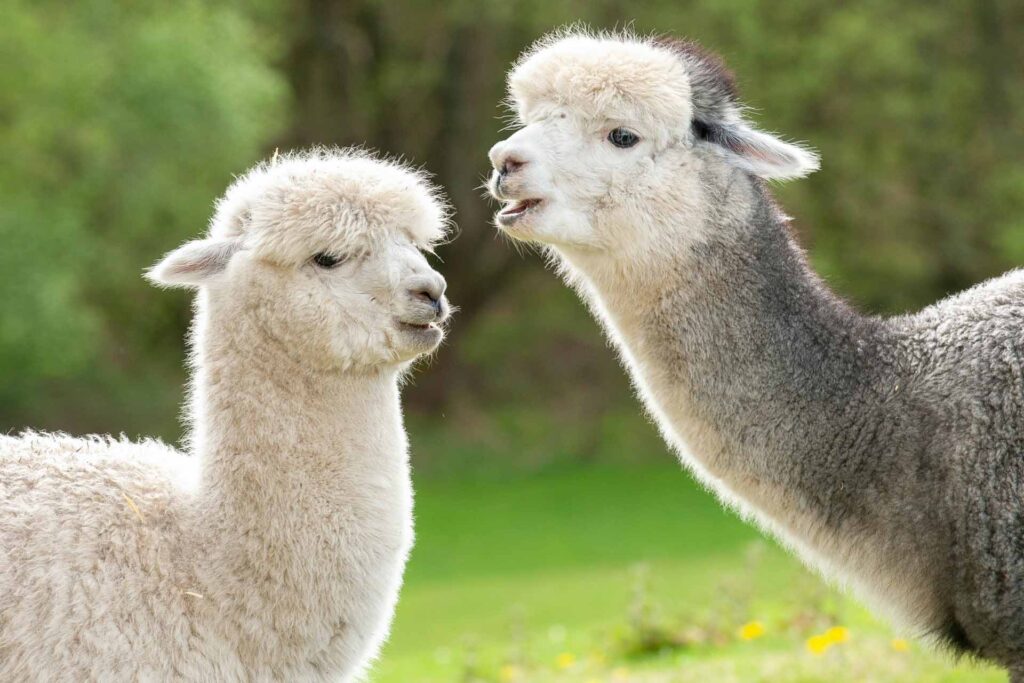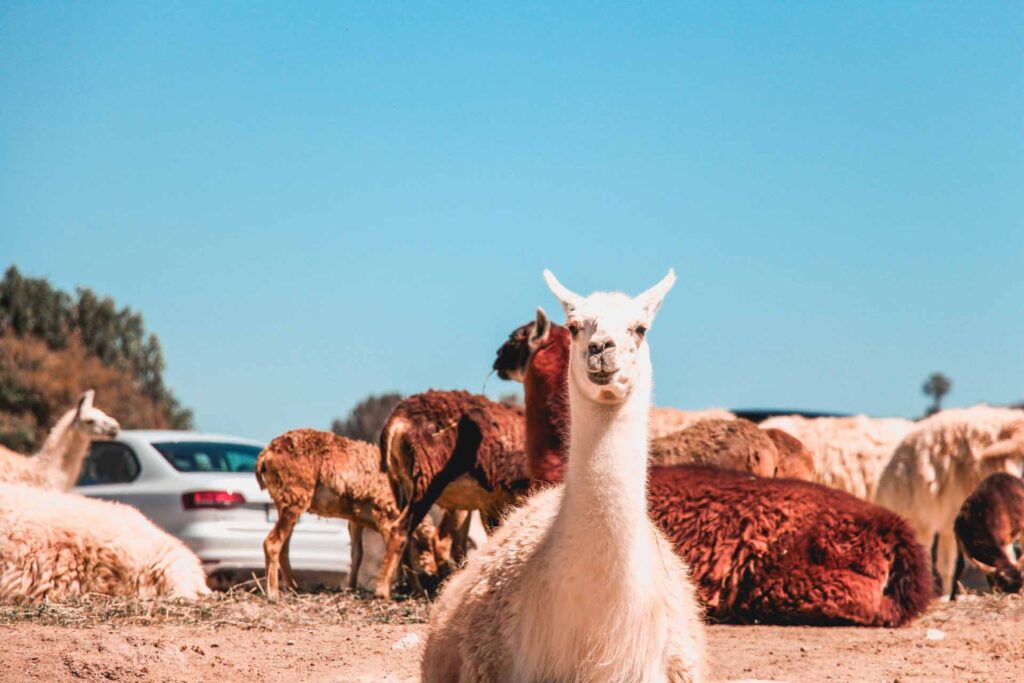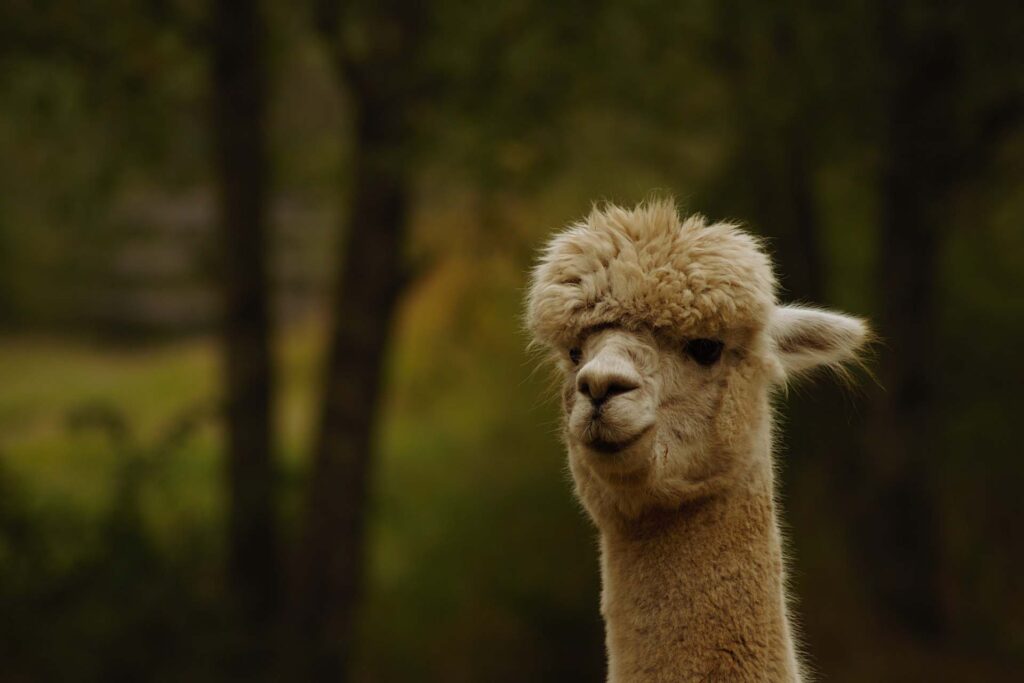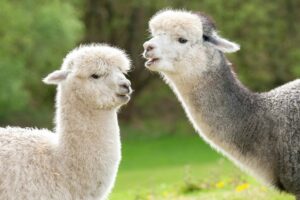Alpaca are cousins to Llama and Camel. They were domesticated thousands of years ago in the Peruvian Andes. The Alpaca graze at elevations of 10,000 to 14,000 feet in the harsh Altiplano regions of Peru, Chili and Bolivia.
During the Inca times Alpaca fiber was a status symbol and was a prized trade item. Known as the “Gold of the Andes”, the finer grades of Alpaca were reserved for Inca nobility. Peruvian Alpaca is rarer than cashmere. There are two types of Alpaca – Huacayo with curly kinky hair and Suri with straight, silky, shiny hair. Baby Alpacas are called “Cria”.
Alpaca hair is extremely fine between 16 to 30 microns in width and measures to 1/3 of lamb’s wool. The fiber is soft and velvety smooth and unlike sheep’s wool it is not prickly. The hair has a hollow core that provides its lightweight and thermal qualities. The fiber is stronger and more durable than other wools, yet warmer and lighter in weight. The hair is nearly hypoallergenic and does not absorb odors. It is also unusually strong and resilient. Fabrics made of Alpaca fiber are easy to care for and long lived. The hair from the first 1 shearing of an Alpaca is called “Baby Alpaca”. It is extremely soft and feather weight. The fleece has 40 shades from ivory to black and can be dyed to fabulous colors.
Alpaca fiber:
- has excellent thermal properties
- has a rich silky sheen which has high visual appeal
- has a higher tensile strength than wool
- Is warmer than merino wool
- has no grease, oil or lanolin and does not smell or absorb smells
- does not absorb water and is naturally rain resistant
Alpaca Clothing is SUPERIOR TO OTHER WOOL CLOTHING — IT IS:
- Stronger, warmer and softer
- Smoother and without lanolin which means without the itching and allergic reactions associated with wool
- Water resistant where other wools tend to absorb water
- Washable with a lower tendency to shrink
- Resilient and can last many more years than other wools
Why is Alpaca superior?
Despite being categorized as a specialty wool fiber Alpaca fiber is more akin to hair due to its cellular composition. The core of the hair is made up of air-filled cells which gives Alpaca fibers its insulating properties and tensile strength. In fact, Alpaca fiber is second only to silk in strength. The number of scales on individual Alpaca fibers is considerably lower than sheep’s wool which makes it smooth, not prickly. This explains why wool allergenic people do not have the same allergic reaction to Alpaca. In fact, we have numerous people with wool allergies who have become long term customers of our Alpaca after trying a test item for several days.




